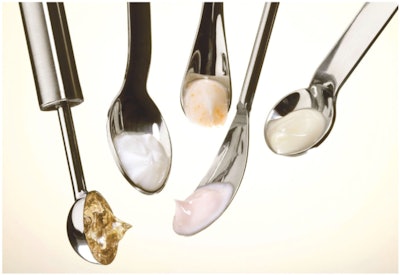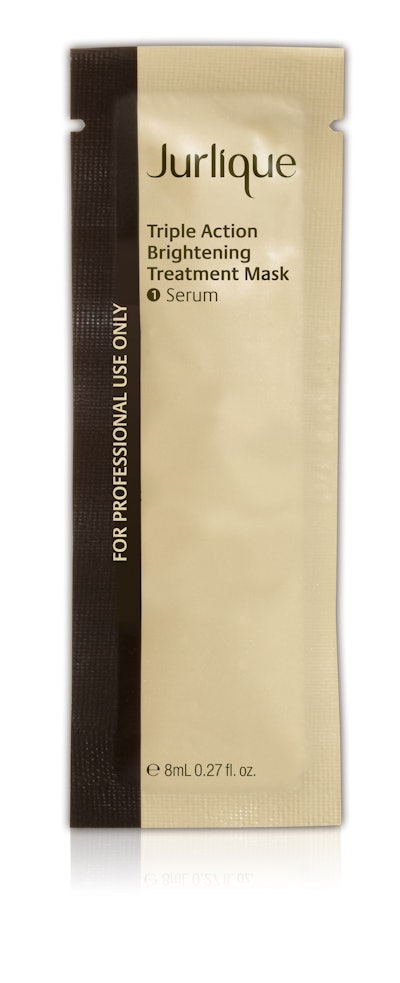 TRQUET/GETTY
TRQUET/GETTYLearn how to turn spa product samples into moneymaking ventures.
Who doesn’t love a free gift? These days, it’s fairly standard in the spa industry for clients to go home with a small product sample. In addition to serving as tokens of appreciation, these items also represent business savvy—so long as there is thought put behind the action. In fact, spas that pass out sample-size products as casually as supermarkets dole out cubes of cheese are missing the point.
“Product trials drive brand awareness, engagement, retail purchases and loyalty,” says Maritza Rodriguez, global VP of marketing & communications at Pevonia. “I would be so bold as to say that I think it’s impossible to truly build a business’ brand to a successful level without sampling.”
Rodriguez speaks from experience: she attributes the success of her company’s new Stem Cells Phyto-Elite cream largely to the sampling efforts of its spa/salon partners, who made a conscious push to get those samples into the hands of likely consumers as part of Pevonia’s ongoing strategic marketing campaign.
“Strategy” is the key word, and that means having a plan to dispense the right samples to the right people under the right circumstances. “When a company samples excessively without a solid marketing plan, it’s equivalent to posting its bank account information online: it will be drained in minutes if not seconds,” asserts Rodriguez.
Rose Fernandez, VP of sales for Jurlique North America, is all for previewing a product before its official release, and shares that this is her favorite type of marketing campaign. Why? Because it consistently works. The company recently sent out hundreds of advance samples of its Triple Action Brightening Treatment Mask to spas and salons, and it created a buzz that has helped make the mask one of Jurlique’s best sales performers.

“We feel that the beauty of Jurlique is in experiencing the product,” explains Fernandez. “Sampling is one of our largest investments and we see great success with conversion from trial to purchase. Our sampling strategy is driven by our marketing focuses.”
How Spas Cash In With Samples
It isn’t just beauty companies that profit from sampling: spas can boost their own bottom lines this way as well. That’s why you’ll often find skincare vendors and their spa affiliates working together on promotional offers that include samples.
Armand D’Agostino, marketing & communications developer at Yon-Ka Paris USA, says his company makes a point of educating its spa partners on optimal sample strategies, and both parties reap the financial rewards when these promotions go well. “Any one of our spas—big, small, new or old—can have success with a sample program if it sticks to a sound and educated method,” he notes.
But successful sampling at the spa level does require some knowhow. In fact, retail guru Carol Phillips, owner of two spas and founder of BeauteeSmarts, believes that training should be a prerequisite to spa staff earning the authority to allot samples. As Phillips has noticed, many employees tend to use samples as a crutch when they’re uncomfortable making sales. “It’s easier to dump a handful of samples on the shopper than to take the shopper through the complete educational and sales process,” she points out. But this defeats the purpose. Samples should be used to enhance sales, not eliminate them
As nice as it feels to disperse multiple freebies to customers, letting samples flow without reservation can actually do more harm than good. “Too many samples might confuse our clients,” says Zee Zebian, marketing manager at Gelous in Calgary, Canada. “They would forget later which products they used and which ones they liked.” That’s why the Gelous Spa sticks to a one sample per visit policy.
Yon-Ka’s D’Agostino concurs. “Often times we see spas give away dozens of samples at a time,” he says. “Even worse is when they give away more than one of the same sample to a customer or a sample of a product that guest is already purchasing. This is wasteful and loses dollars for the spa.”
Laura Staves, senior director of U.S. marketing for Dermalogica, says her company learned not to offer samples of the same product too often for one key reason: it encouraged existing users of the product to continue to seek out the samples rather than buy the product itself. Although not every company—or spa—may have this experience, all can agree it makes no sense to give repeated samples of a product that clients will never pay for before they know they can get it somewhere for free.
Selective Sampling
Suppose your vendor supplies your spa with an abundance of samples specifically to introduce a new product. Popular expert opinion says that it’s then OK to be fairly liberal in distributing them. Otherwise, selectivity is advised. Generally, good candidates for samples will reveal themselves by asking questions about a product.
“My rule with samples is, they’re only given to guests who are seriously interested in the end result the product might offer,” said Phillips. Samples at Gelous Spa are handled similarly. Notes Zebian, “Although anyone can receive samples from our skincare lines, people still have to show some interest first.” And what if someone is very interested? Spa staffers need to distinguish between someone who’s on the fence about buying a product—and therefore requires a sample to help her decide—and the person who’s already interested enough to buy it then and there. Handing over a sample too quickly, without attempting to first make a sales pitch, is a surefire way to lose that sale.
Verbal cues aren’t the only prompts for passing along a sample. By coming to understand the preferences of their individual clients, staff members can make educated guesses about who would appreciate specific products and give samples based on that understanding.
Phillips recommends offering a sample as a complement to other products. If a customer is prepared to walk out of your spa having paid for a new cleanser and toner, but not the moisturizer that was recommended to complete the skincare regimen, she’ll throw in a sample of the moisturizer in the hope that the customer will purchase the complete package on her next visit.
It should be noted that different products may call for different types of samples. Jurlique provides larger sample sizes of serums that they’re confident will deliver amazing results after multiple uses, prompting customers to come back for the full size. However, the company sticks to single-use foil samples for products where the aim is to hook people on the texture or the scent. Phillips points out, however, that when it comes to scent-based items, testers in the lobby do just as good a job of enticing clients to buy.
Some spas have had success with improvising on samples, putting together their own miniature trials of selected products. It’s up to each spa owner to decide whether this is financially worthwhile. Gelous Spa engages in this practice and, although owner Zebian estimates that each hand-packaged sample costs Gelous Spa $1 per container, it’s ultimately “impacts sales positively.”
The Crucial Follow-up
Spas cannot assume that handing out the sample alone is enough. On the contrary, it’s merely the first step toward developing a regular buying customer. “You have to track samples given and have a method for the staff to call and follow up with the shopper—otherwise there is no reason to give out samples,” reasons Phillips. “Without the follow-up, samples are just a gift.”
Jurlique’s Fernandez agrees. “Estheticians need to make diligent following up on samples core to their daily activity, no matter how busy it gets,” she emphasizes. “A call from the client’s esthetician and an offer to send or hold that product for her—and book a future treatment—is the best client service.” It’s also a good way to guarantee that the client will return to the place she received the sample to make the purchase. There’s always the danger of giving a sample to a customer, having her love it, and then having her buy it somewhere else!
Dermalogica employs a clever strategy: the company sends “bounce-back discount stickers” to their spa accounts to attach to the samples they distribute. This incentivizes customers to return to the same location where they received the sample to purchase the full-size version. It also enables the spa to keep track of which samples are resonating with the spa’s clientele.
Dermalogica’s Staves offers a final tip on how to use sampling to secure a sale. “Next time, if your client is hesitant to commit to a purchase, suggest they buy it and take a free sample of the product as well,” she advises. “Tell them to use the sample first, and if they don’t like it, they can return the unopened full-size item for a full refund.” There’s virtually no risk to your inventory and, as long as you sell the appropriate high-quality products, it’s unlikely that you’ll be issuing too many refunds.
–By Kevin Mathews











